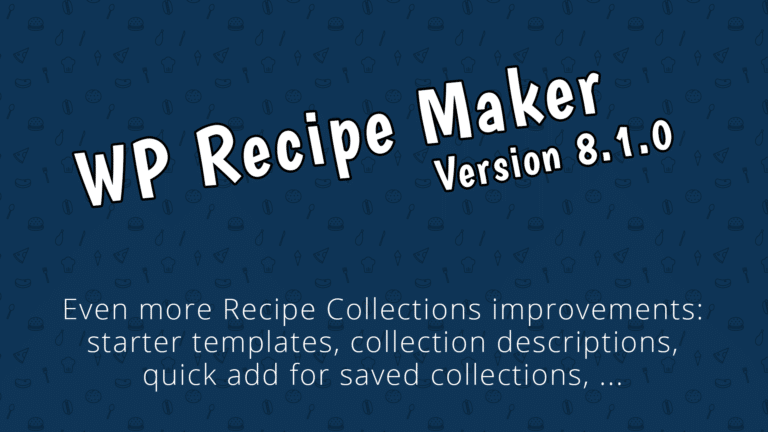For centuries, spices have held a unique role in culinary and cultural traditions worldwide, with ancient Egyptians using them as early as 3500 BC for both flavor and cosmetics. Today, spices remain a high-demand product, and selling spices online has become a profitable venture, allowing entrepreneurs to reach a diverse and expansive market without the high costs of a physical store.
This complete guide will walk you through every step of launching a successful online spice business, from meeting essential licensing requirements to building a memorable brand and choosing the right eCommerce platform. Ready to spice up your business journey? Let’s get started!
How to start a profitable spice business online
The spice industry presents a lucrative opportunity for entrepreneurs, driven by growing consumer interest in diverse cuisines, wellness, and organic ingredients. Valued at approximately $28.5 billion in 2024, the global market is projected to reach $41.9 billion by 2033, growing at a 4.91% CAGR. This growth is particularly strong in direct-to-consumer and specialty segments, driven by the rising demand for authentic, exotic flavors, natural ingredients, and convenient, flavorful meal solutions.
To get a clear picture of your potential market, research trends and identify areas where you can stand out. Focusing on unique, high-quality spice blends for health-conscious consumers or gourmet cooks looking for premium flavors is an excellent way to capitalize on these opportunities.
Choosing your spice business model
When starting an online spice business, choosing the right business model is a must. Here are some popular approaches to think about:
- Wholesale: Selling spices in bulk to retailers or restaurants can lead to larger orders and steady demand. However, this model often involves lower profit margins.
- Direct-to-Consumer (DTC): Selling directly through your own online store allows you to create a strong brand presence, control your pricing, and engage with customers directly. This approach is ideal for building brand loyalty and allows you to maintain full control over your brand’s narrative. However, it requires significant upfront investment in website development, marketing, and logistics, and maintaining consistent customer acquisition can be resource-intensive.
- Dropshipping: If you’re looking to minimize upfront costs, dropshipping is an option. This model allows you to partner with suppliers who handle inventory and shipping, reducing your overhead. However, you may have less control over the quality and speed of deliveries, which can impact customer satisfaction.
Weighing the pros and cons of each model can help you decide which one aligns best with your business goals, resources, and vision for customer experience.
Calculating startup costs and investment
Starting an online spice business requires a clear understanding of initial costs and expected returns. Here are some of the most common startup costs:
- Ingredients and supplies: Sourcing high-quality spices is essential. Purchasing in bulk can reduce costs; for example, buying 100 pounds of a common spice might cost between $500 and $1,000, depending on the spice and supplier.
- Packaging and labeling: Professional packaging enhances brand appeal and ensures compliance with regulations. Custom packaging and labeling can range from $2 to $5 per unit, varying with design complexity and order volume.
- Licensing and certifications: Operating legally requires specific licenses and certifications. Costs vary by location but can range from $200 to $1,000 for initial permits. Additional certifications, such as organic or fair-trade labels, may incur extra fees.
- Marketing and branding: Establishing an online presence is crucial. Website development can cost between $2,000 and $5,000, depending on features. Digital marketing expenses, including social media advertising and content creation, might start at $500 per month.
- ROI expectations: To forecast profitability, calculate per-unit costs and expected selling prices, then estimate sales volume. For instance, if your total cost per spice jar is $5 and you sell it for $10, your gross profit per unit is $5. Selling 1,000 units would yield a gross profit of $5,000.
Essential steps before selling spices online
Ensuring safety and quality standards
To legally and safely sell spices, it’s essential to meet local licensing, food handling, and packaging standards. This includes securing a business license and food handling certification, such as through programs like ServSafe and Learn2Serve. Compliance with FDA regulations is also important for U.S. businesses, covering food facility registration, proper labeling, and good manufacturing practices (GMPs).
Quality control plays an important ole in building trust and maintaining consistency. Regularly test blends for flavor, color, and freshness, and use safe packaging to prevent contamination. Maintaining these standards not only ensures a quality product but also strengthens customer confidence in your brand.
Business registration and legal structure
To operate legally, you’ll need a business license and the right business structure. Check local requirements, complete the application, and pay any applicable fees. Common structures include sole proprietorship, partnership, LLC, or corporation, each with varying tax and liability benefits. Consult a legal advisor to choose the best structure for your needs.
Required certifications and permits
Obtaining relevant certifications can enhance your brand’s credibility and appeal:
- Organic certification: USDA Organic ensures compliance with standards for natural production, free from synthetic pesticides.
- Non-GMO project verification: Indicates products are free from genetically modified organisms, appealing to health-conscious consumers.
- Fair Trade certification: Shows support for ethical labor practices, attracting socially responsible buyers.
- Food safety certifications: Options like HACCP or FSSC 22000 verify that your production process meets high safety standards.
- Kosher and halal certifications: Opens your products to customers observing Jewish and Muslim dietary guidelines.
Finding reliable spice suppliers
Sourcing fresh, high-quality spices is key to making memorable blends. Look for reputable suppliers known for quality and transparency, and build strong relationships for reliable, consistent ingredients. Regularly comparing suppliers helps you maintain quality and negotiate better pricing.
Setting up your spice business operations
Essential equipment and tools
It’s not just about having the right equipment. It’s also about having good quality equipment that helps with product consistency and meeting food safety standards. Here is some basic equipment you should invest in when starting out:
- Grinders: For grinding whole spices into powder.
- Mixers: For blending different spices to create unique mixes.
- Sealable containers: For packaging and preserving the freshness of your spices.
📈 Scaling tips: Invest in automation for faster packaging, optimize workspace with smart storage, and add quality control tools like moisture meters to maintain standards as you grow.
Inventory management systems
Effective inventory management prevents stock issues and waste, keeping your business running smoothly. Start with basic tracking methods, but consider inventory software like Zoho Inventory as you grow. Automated systems reduce errors, provide real-time stock data, and ensure you always have the right products on hand.
Packaging and labeling requirements
Clear packaging and labeling are essential for consumer safety and legal compliance. Be sure to list all ingredients, highlight potential allergens, and include nutritional information if needed. Thoughtful, transparent labeling builds customer trust and reinforces your brand’s quality.
🍳 Pro tip: Clear labeling builds consumer trust and meets legal requirements.
Choosing your online selling channels
Selling spices online opens up a variety of platforms to reach different audiences. Each platform has unique strengths:
- Amazon: Great for established brands aiming for wide reach, though competitive pricing and fees apply.
- Etsy: Ideal for artisanal or specialty spice blends, catering to niche markets with a loyal customer base.
- eBay: Suitable for competitive pricing strategies and reaching a broad audience, though it appeals to deal-focused buyers.
- Walmart marketplace: Offers high visibility and low fees, perfect for businesses ready for high-volume sales.
Choose a platform that aligns with your brand and customer base, or consider a multi-platform approach to reach more customers.
Setting up a WordPress spice store
WooCommerce is a powerful eCommerce plugin that integrates with WordPress, transforming it into a fully functional online store. It offers a wide range of features tailored to the needs of an online spice business.
WooCommerce provides various payment gateway options, shipping settings, tax settings, and inventory management tools, making it easy to handle all aspects of your online spice store. It also allows for extensive customization, giving you full control over your store’s appearance and functionality, which is often limited in other platforms.
The availability of WooCommerce extensions can further enhance your store. You can add features such as subscription services, booking systems, and product customization tools, enabling you to offer unique services and products that attract and retain customers.
Building your online spice store
Creating your WordPress spice store
Using WordPress with WooCommerce and WP Recipe Maker can help you build a dynamic online spice store.
WooCommerce handles eCommerce essentials like payment options, inventory, and shipping, while WP Recipe Maker lets you showcase recipes featuring your spices. Sharing recipes with your blends not only boosts engagement but also attracts culinary enthusiasts and helps your store rank better in search results.
With these tools, you can create an appealing, functional online store that highlights the versatility of your spices, encouraging repeat visits and purchases.
Product photography for spices
High-quality photography is essential to showcase the appeal of your spices. Use natural light to capture the true colors and textures, and consider close-up shots to highlight each blend’s unique look. Styling with complementary ingredients or simple props can add context and make your products visually appealing. Consistent, professional photos build trust and make your online store look polished.
Writing effective product descriptions
SEO-friendly product descriptions help attract more customers and improve search rankings. Start with a clear, engaging headline, then describe the spice’s flavor, ideal uses, and any unique qualities. Use short sentences and include keywords like “organic spice blends” or “premium spice mixes.” Templates can include phrases like “Perfect for [dish]” or “Pairs well with [ingredient],” giving customers ideas while boosting SEO visibility.
Setting competitive prices
Setting the right price involves balancing costs, market trends, and customer expectations. Research competitors’ pricing and consider factors like sourcing costs and packaging quality. Highlight any unique features in your pricing strategy – such as organic certifications or premium packaging – to justify higher price points if needed. Offering bundle deals or tiered pricing can also attract different customer segments, making your products more appealing across price ranges.
Marketing your online spice business
Building your spice brand
Creating a strong brand presence both online and offline sets your spice business apart and builds trust. Plan your content marketing strategies, tailored around creating and sharing high-value content regularly. Share recipes, spice benefits, and cooking tips that highlight your products, making your brand a helpful go-to resource. Engaging videos, infographics, and customer stories on social media can further attract and retain your audience. Collaborating with food bloggers and influencers for product reviews, giveaways, and guest posts expands your visibility, reaching new customers and lending credibility to your brand. Offline, attend farmers’ markets and local events to engage with customers directly, offer samples, and showcase your products; provide promotional materials with your website and a discount code to guide people to your online store.
Blending these approaches creates a memorable brand experience that strengthens your position in the market and attracts loyal customers.
Social media marketing strategies
Social media is essential for showcasing your spice blends and connecting with your audience. Use Instagram’s visual platform to share high-quality images of your products and recipes. Facebook is ideal for building a community and sharing updates, while Pinterest can inspire with creative ways to use your spices in dishes.
Email marketing campaigns
Email is a powerful tool for customer retention and engagement. Send regular newsletters with new product updates, special discounts, and recipe ideas. Automated campaigns – like welcoming new subscribers or reminding customers about abandoned carts – can further boost engagement and encourage repeat purchases.
Managing and growing your spice business
Inventory tracking and management
Effective inventory management is key to meeting customer demand and reducing waste. Start with simple tracking methods, but consider inventory software as you grow. Tools like barcode scanning can streamline updates and help maintain accurate stock levels.
Order fulfillment and shipping
Streamlined fulfillment ensures timely deliveries and customer satisfaction. Consider partnering with a fulfillment service or using a platform that integrates with your inventory system to simplify processing, picking, packing, and shipping.
Customer service for spice sellers
Exceptional customer service builds loyalty. Set up clear protocols for responding to inquiries, managing returns, and resolving complaints. Simple tools like CRM systems can help keep communication organized and efficient.
Scaling your spice business
Growing your spice business involves expanding product offerings, increasing marketing efforts, and optimizing operations. Develop a growth plan that includes adding new spice blends, reaching new markets, and investing in automation for inventory and fulfillment processes. Consider collaborations with influencers or new distribution channels to increase visibility, and regularly review business metrics to adjust your strategy as you expand.
Start selling your spice blends on WordPress
Building a successful spice business starts with establishing a strong online presence. WordPress, paired with WooCommerce, gives you the flexibility to create a unique, engaging online store tailored to your brand. Add WP Recipe Maker to share recipes that highlight your products, enhancing SEO and attracting a broader audience.
Get WP Recipe Maker, and put the flavor in your spice blend business!






